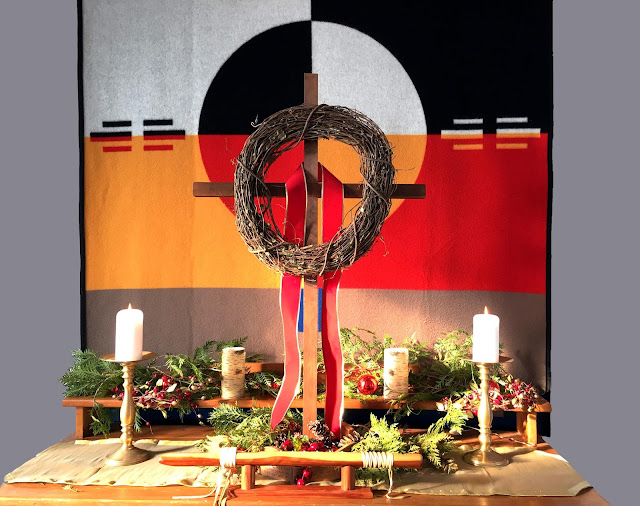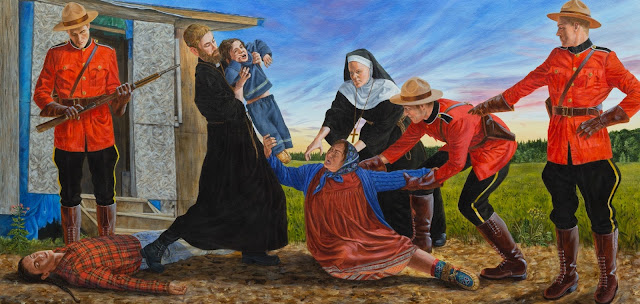Dr. Mary Walker with her Medal of Honor and Civil War uniform.
Mary Edwards Walker was a dark haired
slender slip of a woman with a defiant don’t-take-no-for-an-answer
attitude and a penchant for men’s clothing when she
presented herself to the Army and demanded to be put to work as a surgeon not long after the Civil War erupted with the barrage of Fort Sumner in April 1861.
The shocked and astonished Army had absolutely no idea what to do with her. The
best they could offer her was a chance to serve as a volunteer civilian nurse at no
pay. Better than nothing, she thought, and took the chance vowing that
she would prove herself as the equal of any man.
Walker
served in the field ending grotesquely maimed Union
soldier boys at the disastrous First
Battle of Bull Run—or Manassas Junction as the Rebs called it—in June. Then
she aided their recovery at the hospital set up in the Patent Office. That gained her the grudging respect of Army surgeons, some of whom began advancing her cause.
She
was born Mary Edwards on November
26, 1832 on her parent’s farm near Oswego
in Upstate New York—part of the
so-called burned over district because
of successive waves of evangelical fervor that had swept over
the region. It was also the fertile ground of independent dissenters of all types, but especially the breeding
ground of the infant feminist and
suffrage movements, teetotalism, and abolition. Working
alongside her four brothers in
comfortable men’s
clothing, Mary absorbed it
all with the active encouragement of her mother.
Walker graduated from Geneva Medical College in Ohio, the same school the educated the first college educated U.S. female doctor Elizabeth Blackwell.
She learned her letters in the rural school
her mother kept and when the time came—at about the age of 15—took up teaching
herself, saving her money for a higher
education. She enrolled at Geneva Medical College where she graduated
in 1855 at the age of 22, the only woman
in her class.
Upon
graduation she married a
fellow student, Albert Walker, and together they set up practice in Rome, New York, an Erie Canal port. The
practice struggled, largely due to suspicion of female doctors of whom there were damned few in the whole country. To make matters worse, Mary continued to
frequently go abroad in men’s clothing insisting simply that they were
more comfortable and practical than the bulky layers of skirts and
petticoats required of women.
By
1860 not only was the practice floundering,
so was the marriage. The distaff Dr. Walker decided that her education needed broadening. She enrolled as
an undergraduate at Bowen
Collegiate Institute, later known as Lennox
College, a Presbyterian
co-educational liberal arts school in
Hopkinton, Iowa that had just
opened. Her tenure there was brief,
however. She left the school when required to drop out of the all-male Debate Society.
Thus,
she was very much at loose ends
and available when the War broke out
with all of its exciting opportunities.
Dr. Walker became adept at the brutal but necessary amputations conducted in primitive field hospitals without anesthetics or hygiene.
After
winning respect for her early work as a nurse, Walker was allowed to accompany the Army as an unpaid volunteer surgeon at field hospitals—the kind of places that
made production lines of amputations after a battle, brutal but necessary work when
Minié balls, cannon balls, and shell fragments shattered limbs and the procedure was the
only way to try to avoid fatal gangrene
infections. She
saw a lot of this kind of action with the Army
of the Potomac at Fredericksburg in
December 1862. In
September 1863 she was with the Army of
the Cumberland for the Battle of Chickamauga.
The woman posing with officers and civilian surgeons in this photo is believed to be Mary Walker.
Working
in a hospital in Chattanooga after
the battle Walker encountered teen age Frances
Hook who on her third enlistment
in an Illinois volunteer regiment as
Private Frank Fuller had been captured and imprisoned in Atlanta. Hook was wounded
in the thigh in an escape attempt
and her gender was discovered. She was then
slated for prisoner transfer, but
her story so impressed Confederate
President Jefferson Davis that he offered her a commission if she would change
sides. Hook had defiantly refused, declaring that she would rather serve in the
Union Army as a private than as a Rebel lieutenant
and that she would rather be hanged
than fight against the Union. Her story so
impressed the feisty feminist doctor that Walker made sure her story was publicized in the press and she lobbied unsuccessfully for the War Department to match Davis’s offer
and make her a second lieutenant in blue.

About
the same time, Walker was also offering her services to the Secretary of War as a spy behind the lines. Although this, too, was turned down, she did
finally get an official appointment with pay as a civilian surgeon with the Army of the Cumberland, making her the first woman ever employed by the Army in that capacity.
As assistant surgeon of the 52nd Ohio Infantry, Walker frequently crossed the lines to treat
wounded or sick civilians and even wounded Confederates. She may very well have collected intelligence on enemy troop disbursements on these forays,
partially fulfilling her dream of becoming a spy. The Confederates certainly thought so. On April 10, 1864 she was arrested after
assisting a Southern surgeon in an amputation.
She was charged as a spy—a capital
offense. She was held at Castle Thunder in Richmond, Virginia until she was exchanged on August 12.
Undeterred
by the experience she returned to field service for the Atlanta campaign. Later,
as the war was winding down Walker was briefly appointed the superintendent of a female prison in Louisville and the as the head of an orphanage in Tennessee.
At
war’s end Walker found herself a modestly
celebrated figure when was recommended for the Medal of Honor by Generals
William Tecumseh Sherman and George
Henry Thomas. On November 11, 1865, President
Andrew Johnson signed a bill
to present her the medal. She was then
he only woman ever to receive the award and one of only a handful of civilians.
She
took advantage of the fame to launch into a career as a lecturer and a writer. Not only did she share her wartime adventures
with audiences, but she became an outspoken advocate for health care for the poor, temperance, women’s
rights, and dress reform for
women. The latter issues were the subjects of two books. Her defiant insistence of wearing men’s
clothing—she usually appeared in dress
clothes with a high top hat—led
to her arrest several times for cross dressing.
Dr. Mary Edwards in old age, defiant in men's clothing she continued to proudly wear her Medal of Honor even when it was officially stripped from her.
As a
committed radical feminist, Walker
was embraced by Elizabeth Cady Stanton and
Susan B. Anthony. She was a fiery advocate of their positions that women already had the right to vote under the Constitution and only needed Congress to enact enabling legislation.
But
later in the century more conservative
women like Carrie Chapman Catt
became dominant in the movement and
switched tactics to a state-by-state campaign to adopt a Constitutional Women’s
Suffrage Amendment. They also looked
to make the movement more respectable by
shunning controversial and colorful characters like Walker and Victoria Claflin Woodhull. Walker refused to either abandon Stanton’s
position or her mode of dress. She found
herself marginalized in the
movement, her speaking opportunities
dwindling.
She
defiantly continued to attend important Suffrage
conventions, where she was pointedly
ignored. She found a more positive
reception among the militant English
suffragettes who were conducting a defiant
campaign of direct action, civil
disobedience, and even vandalism and
suicide.
An increasingly frail Walker continued to
wear both her men’s clothing and her Medal of Honor. In 1917 an Army review board revoked her medal along with 910 others including
the old scout Buffalo Bill Cody. Walker, naturally, continued to wear hers.
Less
than two years later on February 19, 1919 Walker died at the age 86 in her hometown of Oswego. At her simple
funeral service, she was laid out in her best black suit and her coffin
was draped in an American flag. A little more than a year later the Nineteenth Amendment was passed guaranteeing women the right to
vote.
A Statue of Dr. Walker now stands before the Oswego, New York Town Hall.
Slowly,
Walker’s reputation has been restored. A Liberty
Ship was named for her during World
War II. In 1977 President
Jimmie Carter signed legislation
restoring her Medal of Honor. On the 150th anniversary of her birth in
1982, the Postal Service issued a 20
cent commemorative stamp. And in 2000 she was finally inducted into
the National Women’s Hall of Fame at
Seneca Falls, New York.
Walker
has also been honored by having several clinics
and medical facilities named in
her honor, most notably the Whitman-Walker
Clinic in Washington, D.C. Her co-honoree
Whitman, of course, was Walt Whitman with
whom she would have served as a nurse early in the war.






















